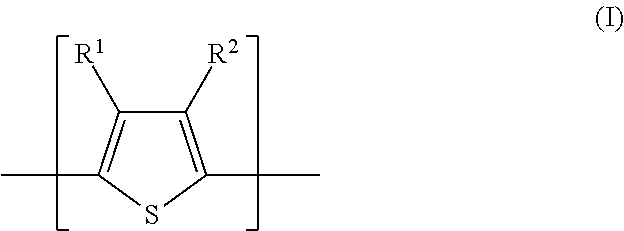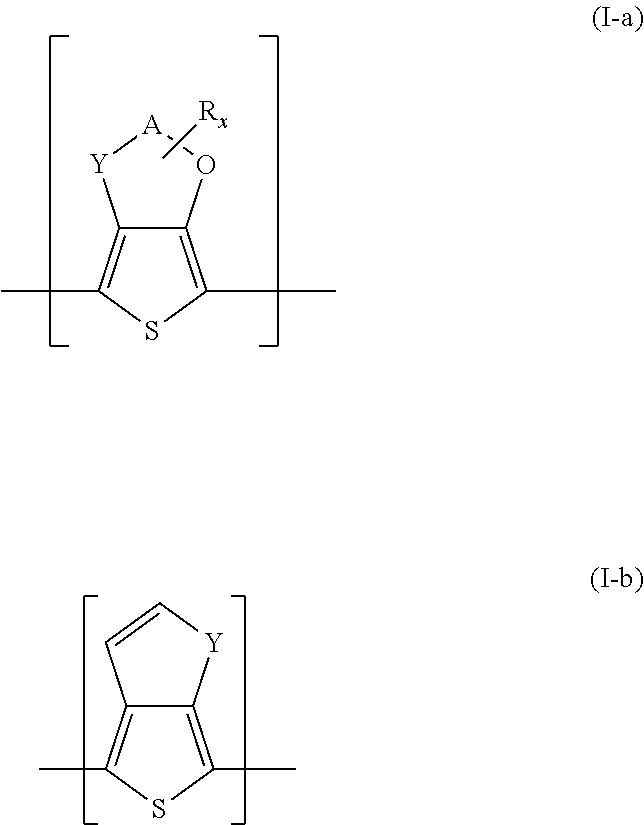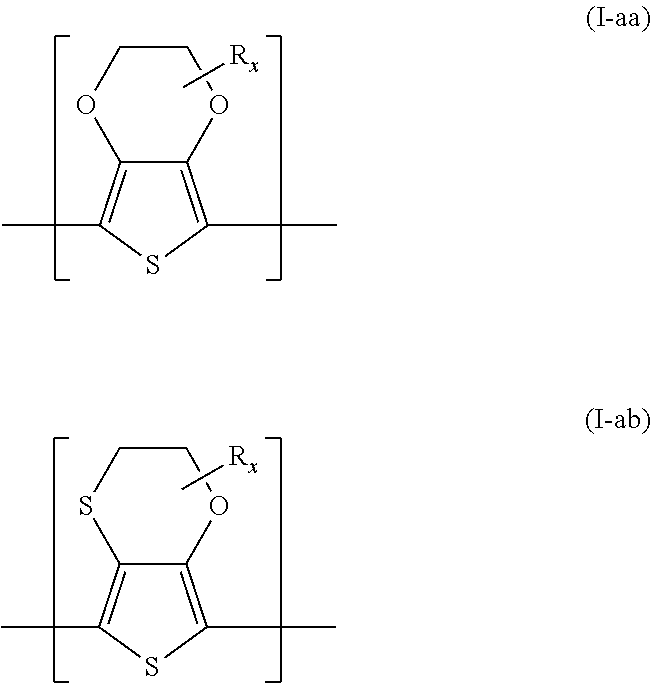Method for the production of conductive polymers
- Summary
- Abstract
- Description
- Claims
- Application Information
AI Technical Summary
Benefits of technology
Problems solved by technology
Method used
Image
Examples
##ventive example 1
Inventive Example 1
[0071]A 200 ml glass vessel provided with a cooling jacket was initially charged with 79.74 g of water and 0.39 g of 3,4-ethylenedioxythiophene. The emulsion was emulsified with an ultrasound finger (24 kHz, power 100 W, Hielscher UP 200 S ultrasound processor) while cooling externally with water for 15 minutes (min). Subsequently, 15.03 g of aqueous polystyrenesulphonic acid having a mean molecular weight Mw of 70 000 g / mol and a solids content of 5%, 0.22 g of iron(III) sulphate dissolved in 3.87 g of water, and 0.76 g of sodium peroxodisulphate were added. The reaction mixture was subsequently irradiated with an ultrasound finger (Hielscher UP 200 S ultrasound processor, 24 kHz, power 100 W) while cooling externally with water for a further 3 h. Within this time, the reaction temperature rose from 20° C. to 35° C. After the reaction had ended, the dispersion was desalinated by adding 26 g of Lewatit MP 62 (basic ion exchanger, Lanxess AG) and 45 g of Lewatit S ...
##ventive example 2
Inventive Example 2
[0075]A 21 stirred vessel with cooling jacket, stirrer, nitrogen inlet and outlet, liquid inlet and outlet via immersed tubes was initially charged with 1389 g of deionized water. Subsequently, 74.4 g of a 25% aqueous polystyrenesulphonic acid solution with a mean molecular weight Mw of 70 000 g / mol were added. The solution was freed of oxygen by introducing nitrogen with stirring for 2 h. After addition of 7.4 g of 3,4-ethylenedioxythiophene under nitrogen, the solution was pumped at 101 / h through an ultrasound flow cell from Dr. Hielscher GmbH, Stuttgart, Flow Cell D22K, Ultrasonic Processor UP400S, with stirring and irradiated with a power of 400 W, 24 kHz for 30 min. Subsequently, 0.14 g of iron(III) sulphate and 10.0 g of sodium peroxodisulphate dissolved in 80 g of water were added under nitrogen. The solution was pumped through the ultrasound flow cell with stirring and irradiated for a further 3 h. Subsequently, 8.4 g of sodium peroxodisulphate dissolved i...
PUM
| Property | Measurement | Unit |
|---|---|---|
| Temperature | aaaaa | aaaaa |
| Percent by mass | aaaaa | aaaaa |
| Pressure | aaaaa | aaaaa |
Abstract
Description
Claims
Application Information
 Login to View More
Login to View More - Generate Ideas
- Intellectual Property
- Life Sciences
- Materials
- Tech Scout
- Unparalleled Data Quality
- Higher Quality Content
- 60% Fewer Hallucinations
Browse by: Latest US Patents, China's latest patents, Technical Efficacy Thesaurus, Application Domain, Technology Topic, Popular Technical Reports.
© 2025 PatSnap. All rights reserved.Legal|Privacy policy|Modern Slavery Act Transparency Statement|Sitemap|About US| Contact US: help@patsnap.com



